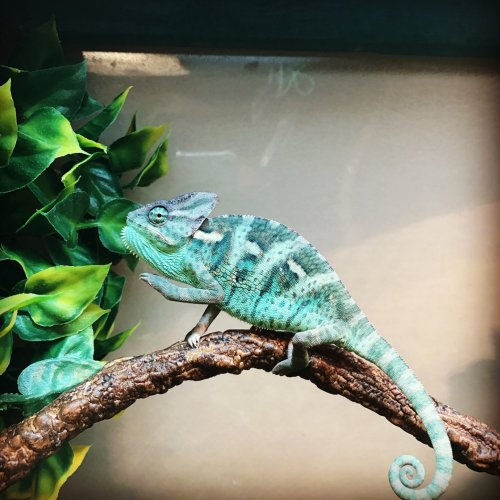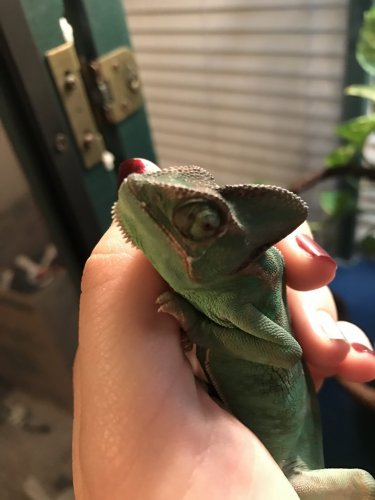Whatascene
Member
So this post is going to look a lil different, I won't be posting the arduous details about my Cham as I've been through it with my vet who specializes in reptiles and it's not part of the reason he is ill.
So my veiled chameleon, Oberyn, is a 5-6 month old male. And yes there is a cynical irony GOT fans, that my lil guy is suffering from a fatal eye disease. My vet is great, people from out of state come to him for their reptiles and he sees all the major pet store reptiles in my area. I have no doubts in his judgement as everything I see lines up with his prognosis/diagnosis. We have extensively assessed cage, diet, and humidity, and have intervened intensively.
So Oberyn has been diagnosed with a disease that he cannot shed his eyes correctly, so the shedding gets trapped in his eyes and causes infection. This hasn't been a one time deal, it occurs every single time he sheds. I've even learned how to remove the shedding eye cap myself so he can see, and the shots only make him feel better until his next shed (which the shedding always remains trapped, never comes out). I do frequent misting and showering, no long-term results. During shedding he stops eating and becomes super frail. My vet and I are shocked he has made it this long as many juveniles die in the first or second shed in the wild. I don't remember the name for the diagnosis but it's a genetic disease where chams can't physically shed their eyes (not environmental).
Well we are at his 5th shedding and I've spoken with my vet about reasonable intervention and continuing with shots are not sustainable for him and his health or financially for me ($130 each visit, shedding is monthly). He will also probably become unresponsive since it's not fixing the shedding stuck.
He is getting weak again and I'm continuing to do what I've been doing... any ideas on keeping him comfortable? Anyone else know of or had a similar experience?
So my veiled chameleon, Oberyn, is a 5-6 month old male. And yes there is a cynical irony GOT fans, that my lil guy is suffering from a fatal eye disease. My vet is great, people from out of state come to him for their reptiles and he sees all the major pet store reptiles in my area. I have no doubts in his judgement as everything I see lines up with his prognosis/diagnosis. We have extensively assessed cage, diet, and humidity, and have intervened intensively.
So Oberyn has been diagnosed with a disease that he cannot shed his eyes correctly, so the shedding gets trapped in his eyes and causes infection. This hasn't been a one time deal, it occurs every single time he sheds. I've even learned how to remove the shedding eye cap myself so he can see, and the shots only make him feel better until his next shed (which the shedding always remains trapped, never comes out). I do frequent misting and showering, no long-term results. During shedding he stops eating and becomes super frail. My vet and I are shocked he has made it this long as many juveniles die in the first or second shed in the wild. I don't remember the name for the diagnosis but it's a genetic disease where chams can't physically shed their eyes (not environmental).
Well we are at his 5th shedding and I've spoken with my vet about reasonable intervention and continuing with shots are not sustainable for him and his health or financially for me ($130 each visit, shedding is monthly). He will also probably become unresponsive since it's not fixing the shedding stuck.
He is getting weak again and I'm continuing to do what I've been doing... any ideas on keeping him comfortable? Anyone else know of or had a similar experience?





